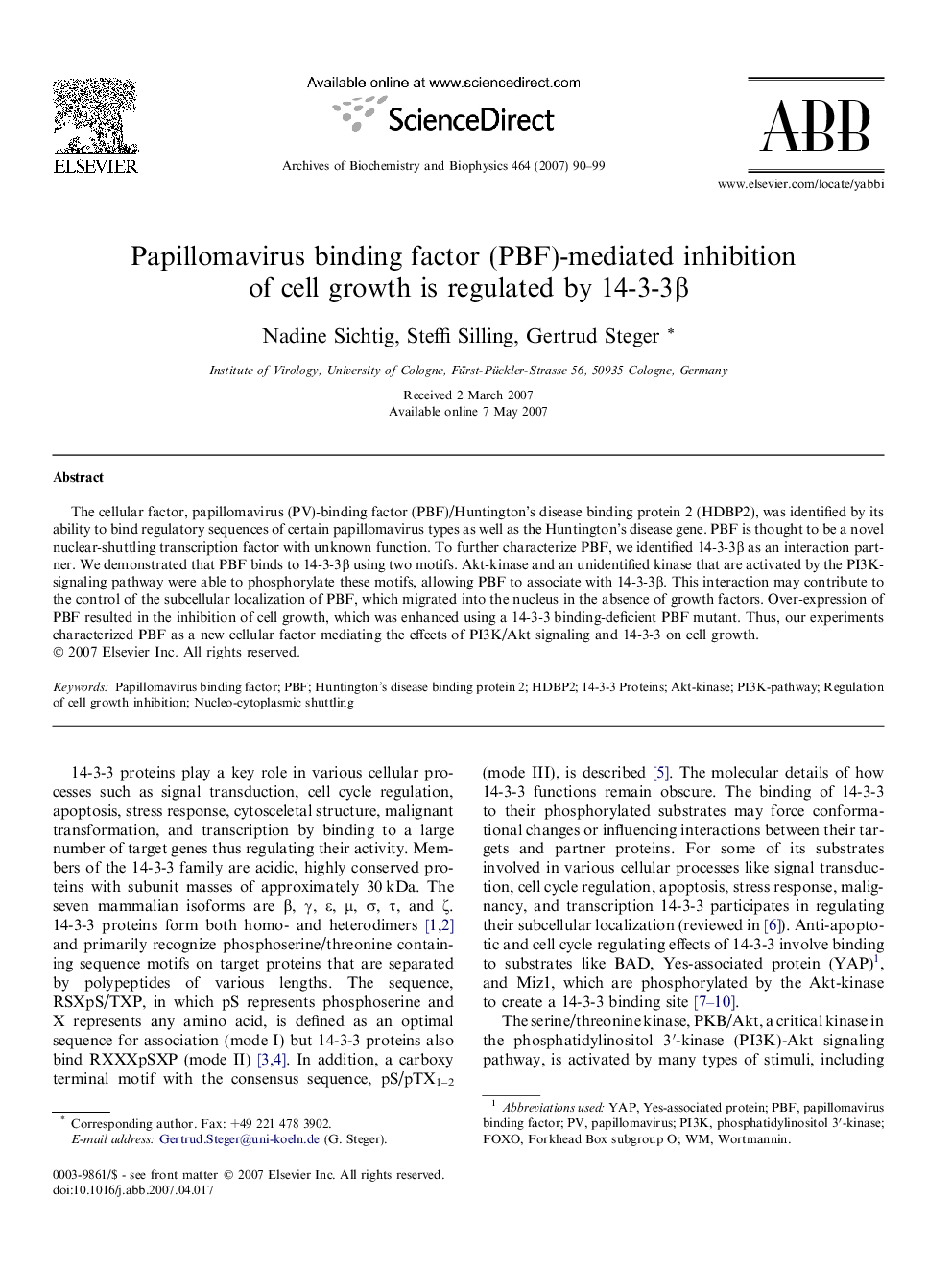| Article ID | Journal | Published Year | Pages | File Type |
|---|---|---|---|---|
| 1926984 | Archives of Biochemistry and Biophysics | 2007 | 10 Pages |
The cellular factor, papillomavirus (PV)-binding factor (PBF)/Huntington’s disease binding protein 2 (HDBP2), was identified by its ability to bind regulatory sequences of certain papillomavirus types as well as the Huntington’s disease gene. PBF is thought to be a novel nuclear-shuttling transcription factor with unknown function. To further characterize PBF, we identified 14-3-3β as an interaction partner. We demonstrated that PBF binds to 14-3-3β using two motifs. Akt-kinase and an unidentified kinase that are activated by the PI3K-signaling pathway were able to phosphorylate these motifs, allowing PBF to associate with 14-3-3β. This interaction may contribute to the control of the subcellular localization of PBF, which migrated into the nucleus in the absence of growth factors. Over-expression of PBF resulted in the inhibition of cell growth, which was enhanced using a 14-3-3 binding-deficient PBF mutant. Thus, our experiments characterized PBF as a new cellular factor mediating the effects of PI3K/Akt signaling and 14-3-3 on cell growth.
